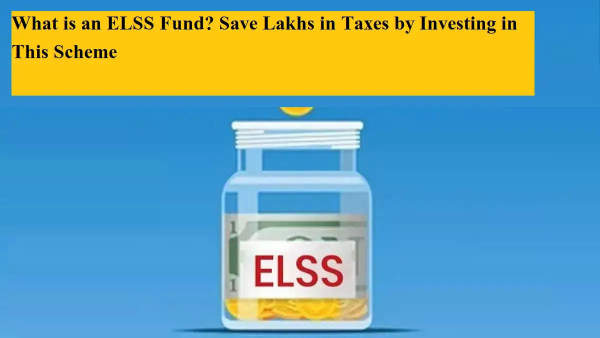
Equity-Linked Savings Scheme (ELSS) is a popular mutual fund investment option that offers tax benefits along with high return potential. Unlike traditional tax-saving instruments like PPF, Fixed Deposits (FD), or National Savings Certificate (NSC), ELSS has a short lock-in period and provides market-linked returns.
If you're looking to save taxes and grow your wealth, ELSS might be the best option for you. Here’s everything you need to know about ELSS, including its benefits, returns, and investment process.
ELSS (Equity-Linked Savings Scheme) is a type of mutual fund that invests primarily in equities (stocks). It is known for its high return potential, but since it is linked to the stock market, it also carries some degree of risk.
📌 Key Features of ELSS:
✅ Tax Benefits: Investments in ELSS qualify for tax deductions up to ₹1.5 lakh under Section 80C of the Income Tax Act, 1961.
✅ Short Lock-in Period: ELSS has a lock-in period of just 3 years, which is the lowest among tax-saving instruments.
✅ Market-Linked Returns: Since the fund invests in stocks, it has the potential to generate higher returns compared to traditional tax-saving options like PPF or FD.
✅ Minimum Investment: You can start investing in ELSS with as little as ₹500 through Systematic Investment Plans (SIP).
✅ No Withdrawal During Lock-in: You cannot withdraw your funds before 3 years. However, after this period, you can withdraw partially or fully.
ELSS returns are market-dependent, but historically, they have delivered better returns compared to other tax-saving investments.
📌 Expected Returns on ELSS:
📌 Example: If you invest ₹1.5 lakh per year in ELSS for 10 years and assume an average return of 15% per annum, your investment can grow to ₹30 lakh+.
You can invest in ELSS in two ways:
1️⃣ Lump Sum Investment: Invest a one-time amount (e.g., ₹50,000 or ₹1.5 lakh) and let it grow.
2️⃣ SIP (Systematic Investment Plan): Invest in small monthly amounts (e.g., ₹500, ₹1,000, ₹5,000) and benefit from rupee cost averaging.
📌 Which is Better?
ELSS comes with a 3-year lock-in period, meaning:
✔️ You cannot withdraw money before 3 years.
✔️ Every SIP installment has its own 3-year lock-in period.
📌 Example:
| Scheme | Lock-in Period | Expected Returns | Tax Benefit (80C) |
|---|---|---|---|
| ELSS Fund | 3 Years | 12%-18% (Market-linked) | ₹1.5 lakh |
| PPF (Public Provident Fund) | 15 Years | 7.1% (Fixed) | ₹1.5 lakh |
| Fixed Deposit (FD) | 5 Years | 6%-7% (Fixed) | ₹1.5 lakh |
| NPS (National Pension System) | Till Retirement | 6%-10% (Market-linked) | ₹1.5 lakh + Extra ₹50,000 |
| NSC (National Savings Certificate) | 5 Years | 7.7% (Fixed) | ₹1.5 lakh |
🔹 Why Choose ELSS Over Other Options?
📌 Steps to Invest in ELSS:
✅ Step 1: Choose a SEBI-registered mutual fund offering ELSS (e.g., Axis Long Term Equity Fund, Mirae Asset Tax Saver Fund, HDFC Tax Saver, etc.).
✅ Step 2: Open an account on a mutual fund platform (Zerodha, Groww, Coin, Paytm Money, etc.).
✅ Step 3: Complete KYC Verification (Aadhaar, PAN, Bank Details).
✅ Step 4: Choose between Lump Sum or SIP investment mode.
✅ Step 5: Invest and track your returns periodically.
📌 Tax Treatment on ELSS Withdrawals
✔️ Best for Salaried & Self-Employed Individuals looking for tax savings and wealth creation.
✔️ Investors with a long-term vision (5-10 years) and moderate-to-high risk tolerance.
✔️ Young investors & first-time investors who want equity exposure with tax benefits.
🚫 Who Should Avoid ELSS?
ELSS is one of the best tax-saving options for individuals looking for higher returns and shorter lock-in periods. It not only helps in saving up to ₹46,800 in taxes (if in the highest tax slab) but also offers potential wealth creation.
✔️ Higher returns than FD, PPF & NSC
✔️ Lowest lock-in period (3 years)
✔️ Start with just ₹500
If you’re looking to reduce your tax burden and grow your wealth, ELSS is a must-have in your portfolio! 🚀